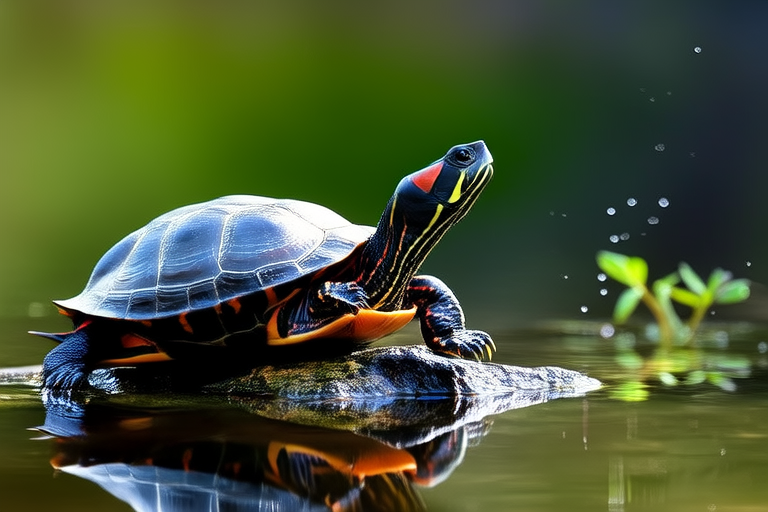The Ultimate Guide to Feeding and Caring for Red-eared Sliders
Red-eared sliders (Trachemys scripta elegans) are one of the most popular pet turtles due to their attractive appearance and relatively manageable size. However, owning a red-eared slider requires dedication and knowledge about their specific needs for a healthy and long life. This comprehensive guide covers everything you need to know about feeding, caring, and maintaining a thriving red-eared slider.
Nutritional Requirements and Balanced Diet
Red-eared sliders have unique dietary needs that must be met to maintain optimal health. Their diet should consist of high-quality commercial turtle pellets, fresh vegetables, and occasional live or frozen prey items like earthworms or crickets. Younger turtles require more protein, while adults need a higher percentage of plant-based foods.
Feeding Schedules
Feed young red-eared sliders daily, reducing to every other day as they reach adulthood. Overfeeding can lead to obesity and health issues, so monitor your turtle’s weight and adjust portions accordingly.
Habitat Setup
Creating an ideal habitat is crucial for your turtle’s well-being. A large aquarium or pond with a minimum length of twice the shell length of your turtle is recommended. Provide a basking area with UVB lighting and a heat source to allow proper thermoregulation.
Water Quality Maintenance
Regularly clean the tank by removing waste and debris, changing about 25% of the water weekly, and performing a complete water change every few months. Use dechlorinated water to prevent harmful chemicals from affecting your turtle.
Basking Needs
Red-eared sliders require exposure to UVB light for calcium absorption and overall health. Place the basking area at one end of the tank, ensuring it receives direct sunlight or UVB-emitting bulbs. Maintain a temperature range between 85°F and 95°F (29°C to 35°C).
Health Monitoring and Common Diseases
Regular health checks include observing behavior, appetite, and physical appearance. Look out for signs of illness such as lethargy, swollen eyes, or abnormal discharge. Common diseases include respiratory infections, shell rot, and metabolic bone disease.
Safe Handling Techniques
Handle your turtle gently, supporting its body and shell. Wash hands before and after interaction to prevent the spread of bacteria. Avoid handling baby turtles excessively to minimize stress.
Tips for Choosing Accessories
Select accessories based on your turtle’s age and size. For hatchlings, choose smaller, safer toys and decorations. As your turtle grows, provide larger rocks and logs for climbing and exploring. Ensure all accessories are non-toxic and easily cleaned.
Growth Patterns and Specific Care Instructions
Red-eared sliders grow rapidly during their first year but slow down as they mature. Hatchlings require more frequent feedings and smaller food portions compared to adults. Monitor growth monthly by measuring shell length and adjusting tank size and accessories accordingly.
Care Instructions for Different Life Stages
- Hatchlings: Provide a shallow water depth, frequent feeding, and regular monitoring for growth and health.
- Juveniles: Increase water depth gradually, introduce more plant-based foods, and establish a consistent feeding schedule.
- Adults: Ensure ample space, maintain water quality, and offer a varied diet rich in vegetables and occasional protein sources.
Conclusion
Owning a red-eared slider can be a rewarding experience when provided with proper care and attention. By understanding their nutritional requirements, setting up an appropriate habitat, and regularly monitoring their health, you can ensure your turtle lives a long and happy life. Remember that each turtle is unique, so adapt these guidelines to suit your pet’s individual needs.
